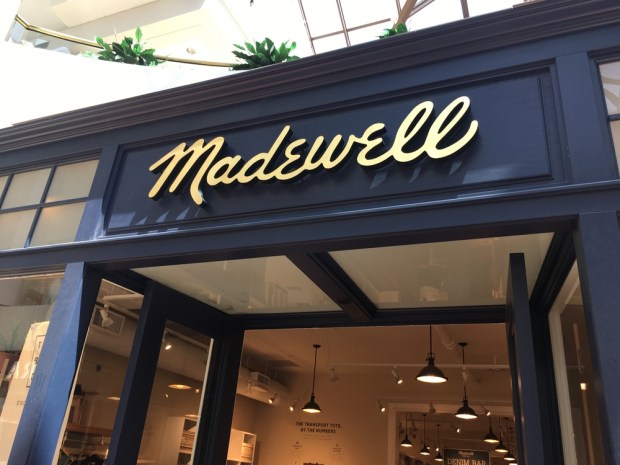How Madewell Is Growing Up, And Reshaping Its Parent Firm

When J.Crew notched 1 percent same-store sales growth last month, it was a cause for celebration – particularly for a brand that has been somewhat stalled for the last several years. After an explosive burst of popularity of the early 2000s – when its lighthearted, preppy chic resonated with consumers – the brand has suffered a protracted decline among the twenty-teens, as fashion’s tempo picked up and J.Crew found itself left behind.
Once ascendant among young working professionals, the brand has boosted its efforts to keep up with the times. A year ago, J.Crew very publicly parted ways with CEO Mickey Drexler and former President and Creative Director Jenna Lyons and committed to hitting the reset button. According to new CEO Jim Brett, that reset will come in the form of a full relaunch this fall – “just in time for the most important fall and holiday seasons.”
What that will look like – and whether consumers are ready to return to J.Crew – remains to be seen. What is evident, however, is that those recent signs of strength and life may not be sparked by J.Crew alone. Currently, the much larger “big sister brand” is riding on the coattails of its younger, more nimble offshoot brand, Madewell.
The numbers don’t lie. Sales were up a remarkable 31 percent at Madewell stores after more than a year, as sales at J.Crew continued their downward slide, falling another 6 percent. Because J.Crew is the larger of the two brands by a fair amount, the overall increase during the last fiscal quarter was 1 percent.
So why is Madewell, despite its small-brand status, swimming so successfully, when its parent and so many other mall brands are struggling to keep their heads above water?
According to Madewell President Libby Wadle, the brand’s big secret is its ability to think small to generate very large effects.
“We think small. We pay attention — there’s always something to learn. And there’s always a great conversation to be had about what we could be doing differently and better, and it stays dynamic,” Wadle told Glossy. “What I’ve learned is to keep it nimble and dynamic, no matter the growth you’re turning out. It’s super important to keep the fresh ideas coming. You have to be thinking about what the next thing is while maximizing what you have going on.”
Wadle has been president of Madewell since for about a year, but has been working with J. Crew since its glory days back in 2004. The brand – which got its start in denim, particularly stylish, reasonably priced jeans – has developed a reputation as the younger, hipper brand that replaced J. Crew in the affections of many millennials, but Wadle mostly dismisses that classification. Madewell’s appeal, she noted, expands far outside the millennial demographic, largely bolstered by its holistic approach to viewing consumers and their feedback.
It’s not enough to focus on what has already been sold to customers, Wadle said, as that only reveals what the customer wants today. There are many more streams of information available to retail than ever before, she noted – and combining those streams is where the power lies in developing what’s next for the customer base. According to Wadle, the goal isn’t to be always reacting to the market, but instead to learn and develop along with the market.
What that has meant in practical terms, noted Wadle, is figuring out new and emerging strategies to respond to the reams of data collected through online shopping behavior, in-store interactions, employee feedback, social media touchpoints and customer service requests. Feedback from as many diverse sources as possible is crucial to Madewell – particularly as it continues to expand its footprint of stores and develops its reputation outside of the denim arena where it gained its first big foothold with consumers.
“Wanting to be known as a great jeans business was super important for us. There have been quite a few iterations of the brand, and we allowed ourselves to have those iterations,” Wadle said. “We allow ourselves to behave as a fluid company, which has been important. It allowed the brand to be what it is today.”
